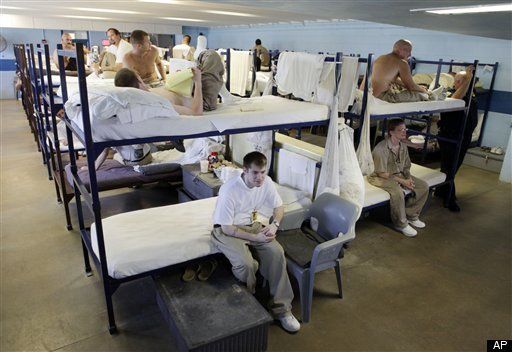
Our Rotary club had an interesting and thought-provoking speaker today, given California 's current budget crunch. It makes you wonder whether we could be spending our tax money so much better, especially in the area of reducing juvenile crime and keeping kids out of prison.
The speaker was John Zapalac, the police chief of Woodlake, a town of fewer than 8,000 people in California 's Central Valley. When he arrived to take up his post several years ago, he wanted to get a feel for the interaction between his officers and the townspeople, so he parked his nondescript car in an unobtrusive spot where he had an opportunity to observe.
Before long, he saw a young woman pushing her baby stroller along the street. As a patrol car approached, the woman hurriedly steered the stroller behind a bush and hid. It was obvious that the townspeople feared the police. Zapalac decided he wanted to come up with a way to change this attitude.
His solution was simple. He started inviting some of the young kids from the town to his ranch on weekends for hot dogs and swimming. Over time, the number of kids attending what eventually turned into a four-times-a-year event mushroomed from 20 to 250.
Also, over time his officers became involved and began to enjoy interacting with the young kids. Families stopped hiding when his officers drove by. In fact, they started waving to each other. Both the townspeople and the officers started to see each other as individuals -- as people -- which is always a key to cooperation. When you start to get to know people and care about them, you stop labeling them as just "cops," "gang members," or "drug addicts." They become human beings with their own concerns and feelings.
As a result of Zapalac's program, now known as Camp Zap, juvenile crime in his town went down by 16%. And how much did it cost? He estimated that he'd spent $30,000 over the last 10 years and that more than 3,000 kids have been to his ranch. (Also, many now express an interest in law enforcement.)
By contrast, he said it costs $50,000 a year to house one prisoner in the California prison system. The state needs thousands more beds, and we're already housing over 170,000 prisoners!
Zapalac's simple idea and his willingness to open up his ranch to kids seems to have done more to prevent crime and decrease the prison population than many other approaches that have been tried. For example, handing out stiffer penalties only seems to result in more people being put in prison, not in fewer crimes.
Meanwhile, we as a society hide behind our locked doors and pretend there's nothing we can do except hope we won't be the next victims.
I don't think most kids grow up aspiring to be criminals, but when they lose their dreams of being a fireman, policeman, doctor or lawyer, they fall into hopelessness and simply learn to survive as best they can.
In fact, the more I think about it, the more I think I resonated so much with Zapalac's talk because of my own background and how fortunate I was to get the support from my fourth-grade teacher, Mrs. Tobin.
She was the toughest teacher in my school, and I was terrified of her. At first I thought she had it in for me for some reason, because she was on me from the first day, always pushing me to do better.
But over time I realized she genuinely wanted me to do well. With my background, growing up in a poverty-stricken Central California farmworker family with violence, physical and sexual abuse, and alcoholism all around me, I never expected anyone to care so much about me.
I tried hard to please her because I was so hungry for positive words and encouragement. And with all the strikes I had against me, it would've been easy for me to go down the wrong path. But tough Mrs. Tobin changed my life.
So, in reality, there's much each of us can do, such as getting involved with our local Rotary or Kiwanis, our church, or other volunteer and service organizations whose mission is helping kids.
It doesn't take a lot of money to solve some of our major problems with gangs and drugs. What it does take is just one or two caring adults who are willing to mentor a troubled young kid. Intervention at the right age can turn a kid away from gangs, crime, and drugs for good.